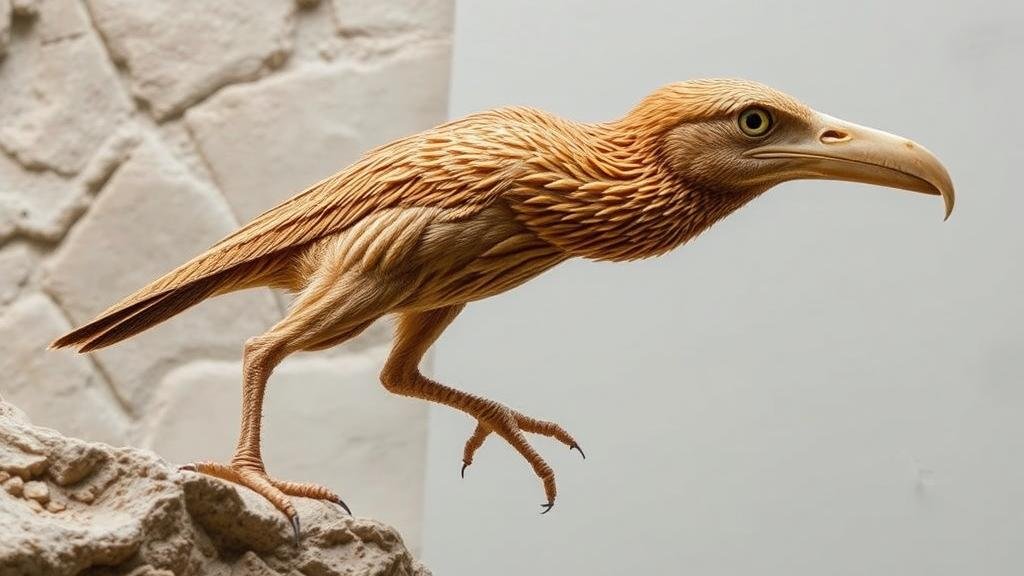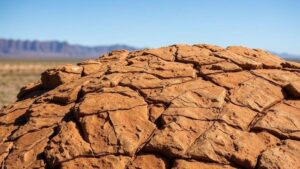Uncovering Fossilized Ice Age Birds: Secrets in Limestone Layers
Uncovering Fossilized Ice Age Birds: Secrets in Limestone Layers
The pursuit of uncovering fossilized remains, particularly those of Ice Age birds, is a thrilling endeavor for rockhounds and mineral collectors. Ice Age birds, which existed during the Pleistocene Epoch (approximately 2.6 million to 11,700 years ago), provide valuable insights into the ecological dynamics of that time. This article explores how limestone layers might hold the key to these ancient secrets and offers practical guidance for aspiring collectors.
The Significance of Ice Age Birds
Ice Age birds are crucial to understanding the climate and environments of the Pleistocene. offer a glimpse into how species adapted to drastic climate changes, providing data essential for studying biodiversity and extinction events. Notably, species such as the giant teratorn, a large predatory bird, showcase how avian life thrived during periods of glaciation.
Limestone as a Geological Archive
Limestone, primarily composed of calcium carbonate, is often formed in marine settings from the accumulation of shells and other calcareous materials. Over millions of years, limestone layers have encapsulated biological material, making it an ideal reservoir for fossilized remains. Key features include:
- Porosity: Limestones porous nature allows for the preservation of organic matter.
- Deposition Process: The slow deposition process can layer fossils in stratified settings, enabling paleontologists to date and study various epochs.
Locating Fossilized Ice Age Birds
For rockhounds interested in finding Ice Age bird fossils within limestone deposits, specific locations are more promising than others. Here are some regions known for their fossil potential:
- Floridas Sinkholes: The states karst topography exposes limestone layers with preserved Pleistocene fauna.
- Californian Fossil Sites: Places like La Brea Tar Pits have yielded thousands of fossilized specimens dating back to the Ice Age.
- Great Lakes Region: The limestone formations in this area often reveal a variety of fossilized birds.
Tools and Techniques for Collectors
Equipped with the right tools and techniques, collectors can enhance their success in locating these ancient avian treasures. Suggested equipment includes:
- Geology Hammer: Essential for carefully extracting samples from limestone without damaging the fossils.
- Brushes and Picks: Ideal for meticulous cleaning of exposed fossilized remains.
- Paleontological Kits: These kits often include essential tools such as chisels, picks, and protective gear.
Also, employing a systematic approach to digging can be beneficial. Start with smaller, less intrusive exploration methods before progressing to larger excavations. This method preserves surrounding geological features and enhances the likelihood of not damaging significant finds.
Understanding Fossilization Processes
To appreciate the significance of Ice Age bird fossils, collectors must understand the fossilization processes involved. Fossilization typically occurs through:
- Permineralization: This occurs when minerals infiltrate organic material, allowing for the creation of a fossil over time.
- Cast and Mold Formation: Impressions of organic remains can create casts and molds, leaving behind detailed features of the original organism.
Understanding these processes can assist collectors in identifying potential fossil specimens and their preservation state.
Legal and Ethical Considerations
Before embarking on a fossil-collecting voyage, its important to be aware of local laws concerning fossil excavation. Many jurisdictions require permits for collecting fossils, especially in state or national parks. It is crucial to respect the environment and contribute positively to scientific understanding rather than deplete fossil resources.
Actionable Takeaways
To wrap up, uncovering fossilized Ice Age birds within limestone layers presents an exciting opportunity for rockhounds and collectors. By following these guidelines, individuals can increase their chances of successful fossil discovery:
- Research specific locations known for Ice Age bird fossils.
- Equip yourself with proper tools and follow ethical collecting practices.
- Gain an understanding of geological and fossilization processes to better identify fossils.
By combining geological knowledge with passion, collectors can not only uncover the secrets of Ice Age birds but also contribute to the broader understanding of Earths prehistoric narratives.


